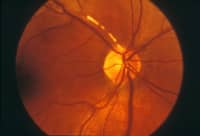- Cholesterol is a vital component of cell membranes.[1]
- Cholesterol is essential for the formation of specialized membrane microdomains known as lipid rafts, which are involved in cellular activities
including transduction and protein trafficking.[1:1]
- This lipid raft is a sterol-rich sphingolipid-rich domain as a host for several cell signalling processes.[1:2]
- Cholesterol is very crucial for synapse activity and plasticity in the brain.[1:3]
- Cholesterol influences the organization and function of neurotransmitter receptors, hence altering signal transmission between the neurons.[1:4]
- Cholesterol regulates synaptic vesicle release, which is required for effective neurotransmission.[1:5]
- Cholesterol contributes to the creation and stability of dendritic spines, which are tiny protrusions on neurons that are essential for synaptic connection and plasticity.[1:6]
- See video example illustrating dendritic spines:[2]
- Cholesterol is a precursor for the manufacture of neurosteroids, which are steroid hormones that affect neuronal excitability and have neuroprotective properties.[1:7]
- Cholesterol-derived neurosteroids regulate synaptic activity, improve neuronal longevity, and influence cognitive performance.[1:8]
- Cholesterol plays a crucial role in maintaining brain cell integrity and function.[1:9]
Dysregulation of cholesterol metabolism
- Dysregulation of cholesterol metabolism has been implicated in the pathogenesis of Alzheimer’s disease (AD).[1:10]
- Several mechanisms contribute to how cholesterol may be responsible for AD.
- One factor is the impairment of cholesterol transport across the blood-brain barrier (BBB).
- The BBB tightly regulates the entry of cholesterol and other molecules into the brain to maintain cholesterol homeostasis.[1:11]
- AD is associated with potential compromises in the integrity and function of the blood-brain barrier (BBB), leading to perturbed cholesterol transport.
- Specifically, changes in the expression and activity of cholesterol transporters, including ATP-binding cassette (ABC) transporters, may disturb the balance of cholesterol influx and efflux at the BBB.
- These alterations can lead to abnormal cholesterol levels within the brain, potentially contributing to the pathogenesis and advancement of AD.
- Another aspect of disrupted cholesterol homeostasis in AD is the dysregulation of cholesterol biosynthesis.[1:12]
- Cholesterol biosynthesis is a tightly regulated process in healthy cells, but in AD, there is evidence of dysregulation in key enzymes involved in cholesterol production, such as 3-hydroxy-3-methylglutaryl-coenzyme A reductase (HMGCR).
- HMGCR is responsible for the production of mevalonic acid, an obligatory precursor for many sterols and non-sterols.
- Studies have shown alterations in the expression and activity of HMGCR in the brains of individuals with AD, leading to the accumulation of cholesterol precursors and intermediates.
- For example, an oxysterol, 24S-hydroxycholesterol is found abundantly in the brain while another metabolite, 27-hydroxycholesterol has higher concentrations in the capillary network outside the BBB.
- These dysregulated cholesterol biosynthesis pathways may contribute to the increased cholesterol levels observed in AD.[1:13]
- Cholesterol biosynthesis is a tightly regulated process in healthy cells, but in AD, there is evidence of dysregulation in key enzymes involved in cholesterol production, such as 3-hydroxy-3-methylglutaryl-coenzyme A reductase (HMGCR).
- There is evidence of altered cholesterol trafficking and storage within neurons and astrocytes in AD.[1:14]
- Cholesterol is transported between different cellular compartments through a complex network of proteins and lipids.[1:15]
- Changes in cholesterol transporters and regulatory proteins, such as Niemann-Pick C1-like 1 (NPC1L1) and caveolin-1, have been reported in AD.[1:16]
- These alterations can lead to impaired cholesterol transport and abnormal accumulation of cholesterol and its derivatives within intracellular compartments, including endosomes and lysosomes.[1:17]
- The accumulation of cholesterol in these compartments can contribute to cellular dysfunction and the formation of characteristic AD pathologies, such as amyloid-beta plaques and neurofibrillary tangles.[1:18]
- The disruption of cholesterol homeostasis in AD has significant implications for disease progression.
- Altered cholesterol metabolism can impact the processing and clearance of amyloid precursor protein (APP), leading to the accumulation of amyloid-beta (Aβ) peptides, which are the main components of amyloid plaques in AD.
- Cholesterol dysregulation can also contribute to neuroinflammation, oxidative stress, and mitochondrial dysfunction, all of which are thought to play a role in the neurodegenerative processes observed in AD.[1:19]
- One factor is the impairment of cholesterol transport across the blood-brain barrier (BBB).
- The therapeutic implications of restoring cholesterol balance and preserving appropriate cho-lesterol homeostasis could be significant in impeding the progression of AD and ameliorating the accompanying cognitive decline.[1:20]
Title: Modulation of Cholesterol metabolism with Phytoremedies in Alzheimer’s disease: A comprehensive Review
Publication: Ageing Research Reviews
Date: June 2024
Study Type: Review
Author(s): Sushruta Koppula, Nitu L. Wankhede, Shivkumar S. Sammeta, Prajwali V. Shende, Rupali S. Pawar, Niyamat Chimthanawala, Mohit D. Umare, Brijesh G. Taksande, Aman B. Upaganlawar, Milind J. Umekar, Spandana Rajendra Kopalli, Mayur B. Kale
Institutions: Konkuk University, Chungju-Si, Chungcheongbuk Do, Republic of Korea; Kishoritai Bhoyar College of Pharmacy, Kamptee, Nagpur, Maharashtra, India; National Institute of Pharmaceutical Education and Research, Hyderabad, Telangana; Institute of Chemical Technology, Mumbai; SNJB’s Shriman Sureshdada Jain College of Pharmacy, Neminagar, Chandwad, Nashik, Maharashtra, India ; Sejong University, Gwangjin-gu, Seoul, Republic of Korea.
Copy: archive ↩︎ ↩︎ ↩︎ ↩︎ ↩︎ ↩︎ ↩︎ ↩︎ ↩︎ ↩︎ ↩︎ ↩︎ ↩︎ ↩︎ ↩︎ ↩︎ ↩︎ ↩︎ ↩︎ ↩︎ ↩︎https://www.cuimc.columbia.edu/news/alzheimers-old-parts-inside-neurons-may-impair-memory ↩︎
